If you’re not a fan of snakes, look away now.
Experts have captured slow–motion footage of a viper sinking its fans into prey – and it’s not for the faint hearted.
The video reveals how venomous reptiles attack in the blink of an eye, recording the deathly manoeuvres in high definition.
It was captured as part of research which examines how different snakes have different biting styles.
Published in the Journal of Experimental Biology, it reveals that vipers sink their fangs into their victims before ‘walking’ them into position to inject venom.
Elapid snakes, like the King cobra, coral reef snakes and mambas, squeeze venom into their victims by biting repeatedly.
And colubrids – such as grass snakes and corn snakes – sweep their jaws from side to side to tear a gash in their victim and deliver maximum venom.
The team, from Monash University in Australia, said they ‘flinched a couple of times’ when capturing the videos – but that it was worth it to get the footage.
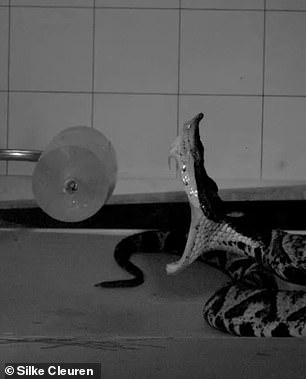
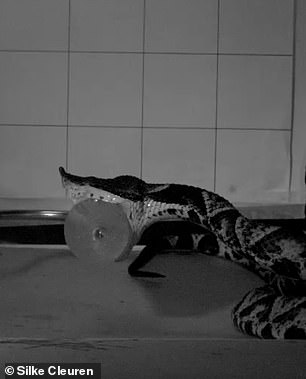
Here (left) the viper can be seen attacking the fake prey with its mouth wide open. Then (right) it clamps down hard on the muscle–like gel, sinking its fangs before injecting venom
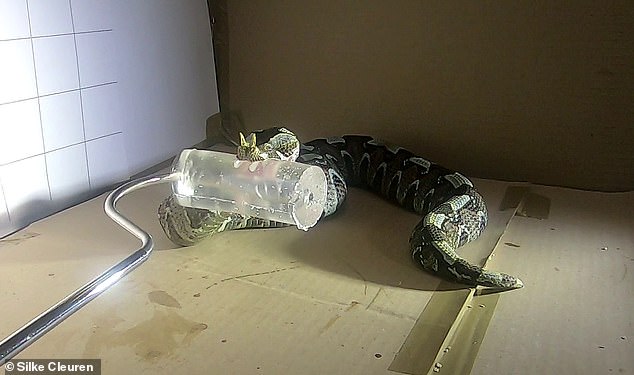
A viper injecting venom into a cylinder of medical gel after striking. The team discovered these snakes sometimes ‘walk’ their fangs into the correct position before injecting venom
For the study, the researchers used a cylinder of warm muscle–like medical gel resembling a small animal to tempt a range of deadly snakes to bite.
They recorded more than 100 encounters with two cameras recording at 1,000 frames per second to recreate the lightning–fast manoeuvres in 3D.
Analysis revealed vipers embedded their fangs into the fake prey within 100 milliseconds of launching a strike.
Some species captured in the slow–motion video accelerated up to 710m/s and landing their bite within 22 milliseconds.
Focusing on the vipers’ fangs, the team saw the needle–like teeth sink into the fake prey, but if the viper wasn’t happy with the position of a fang, it pulled it out to reinsert it at a better angle, effectively walking the fang forward.
Only when the fangs were comfortably in place did the vipers close their jaws and inject venom into their catch.
Overall, venomous snakes use dramatically different strategies to deliver their deadly bites, the team said.
Vipers and elapids, especially, can strike before victims are even aware of their presence.’
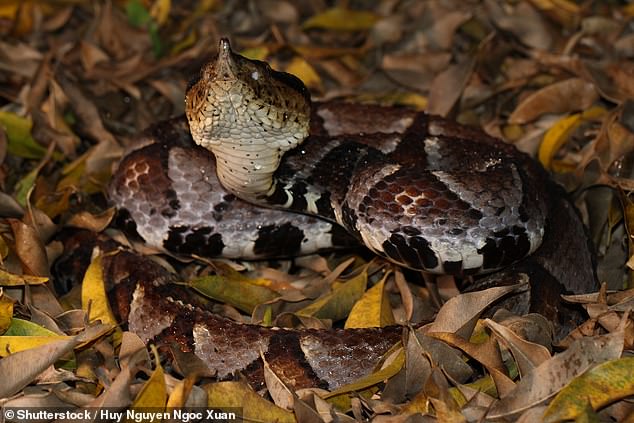
The viper captured in the slow-motion video (Deinagkistrodon acutus) hails from southeast Asia (file image)
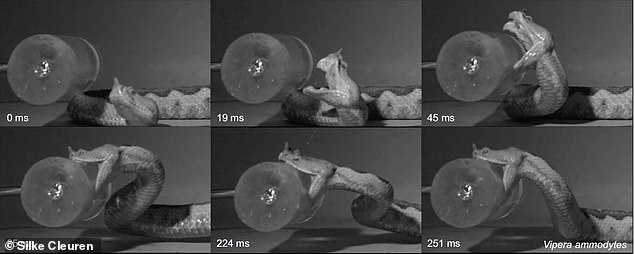
These freeze–frames show a typical strike sequence for vipers, the researchers said. The initial lunge at the prey is followed by fang penetration
‘Few actions in nature inspire more fear and fascination than the strike of a venomous snake,’ the study reads.
‘Within half a second, snakes can start from a static ambush position, lunge at their prey, make contact and return to a resting position.
‘In that same time they must also erect their fangs, penetrate their prey and inject a dose of venom.’
‘Here, we present the first ever large–scale experiment comparing strike performance across 36 venomous snake species.’
